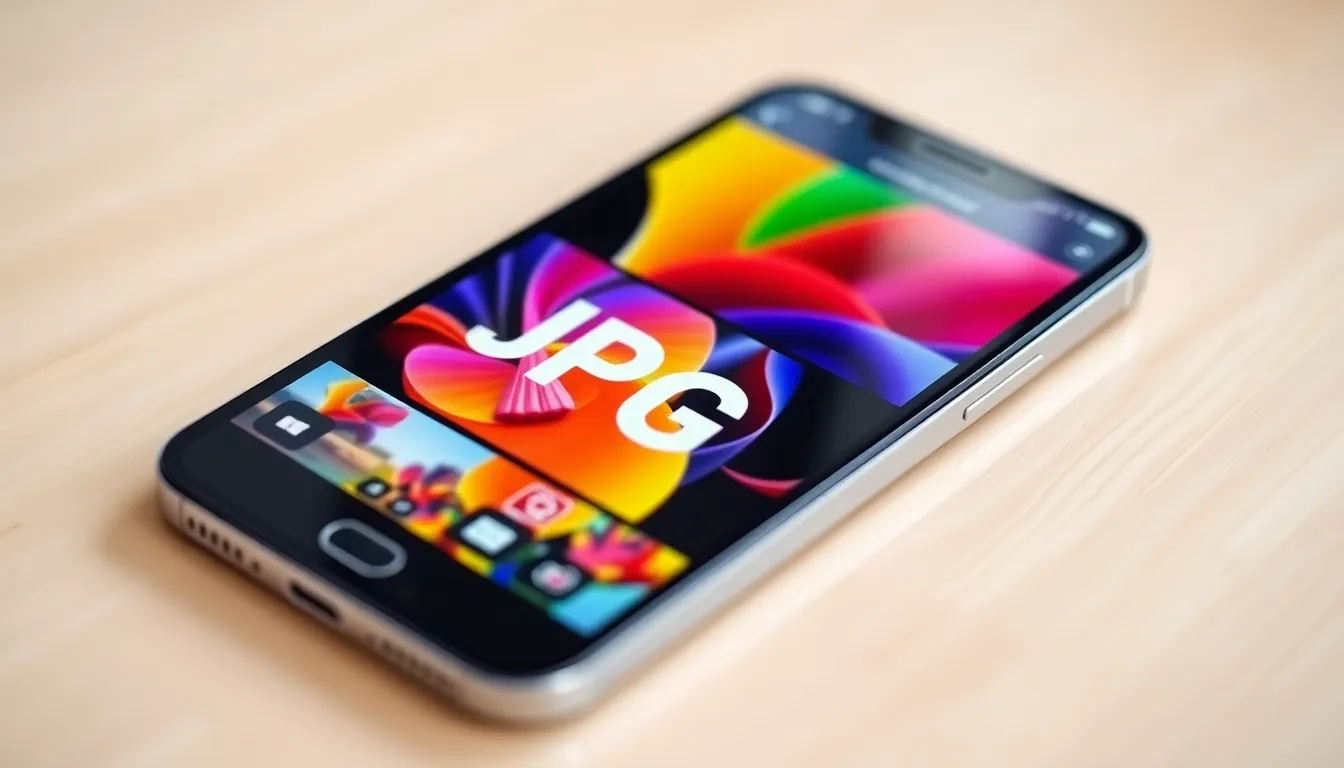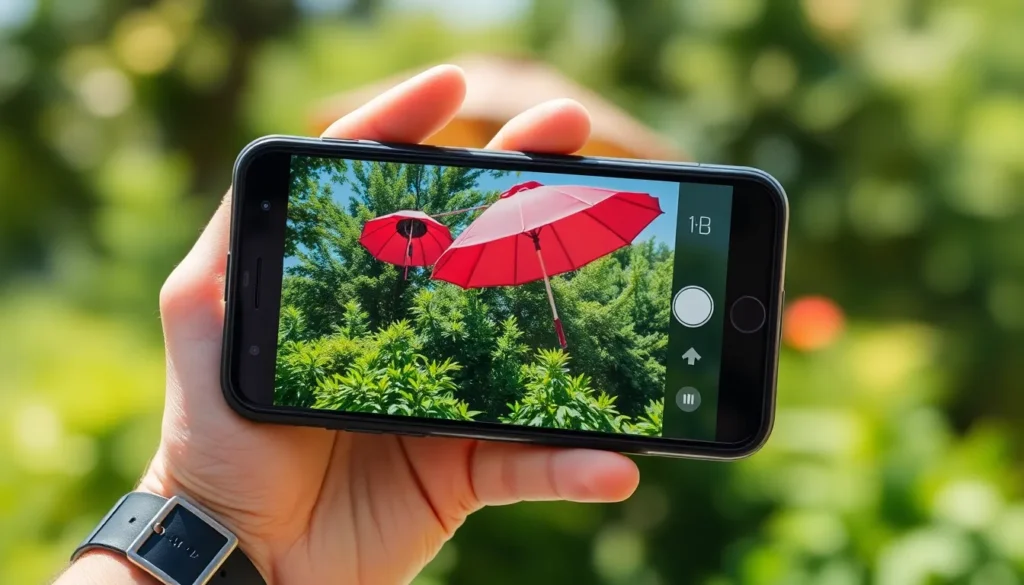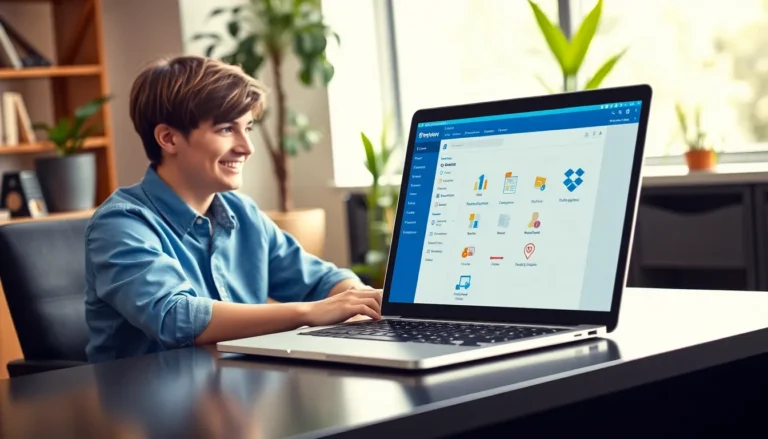Table of Contents
ToggleIn a world where photos reign supreme, having the right format can make all the difference. If you’ve ever tried to share a stunning image only to be met with a compatibility error, you know the struggle. Fear not! Converting your images to JPG on an iPhone is as easy as pie—well, maybe easier than pie if you don’t burn it.
Understanding JPG Format
JPG, known for its efficient compression, is widely used for photographs and images on digital platforms. This format reduces file size significantly without sacrificing too much quality. With JPG’s broad compatibility, sharing images across different devices and platforms becomes seamless.
Images in JPG format display vibrant colors and good detail, making them ideal for web use and social media sharing. From smartphones to professional cameras, most devices capture images in this format. Every photo taken can easily be converted to JPG, ensuring better accessibility.
While JPG offers many advantages, it does not support transparency, unlike PNG files. The lack of a transparent backdrop can be limiting for certain design applications. Compression methods can also lead to quality loss, especially after multiple edits and saves.
Adopting JPG is beneficial for those who focus on reducing storage use and improving loading times for websites. The format maintains a balance between quality and file size, making it a go-to choice for many users.
Lastly, staying aware of JPG’s characteristics aids in making informed decisions when converting image files on an iPhone. Converting to JPG can enhance compatibility and simplify the image sharing process. Understanding these aspects enables users to maximize their photography experience.
Why Convert to JPG on iPhone

Converting images to JPG on an iPhone offers several advantages. This format supports a balance between image quality and file size.
Benefits of JPG Format
Efficiency in compression characterizes the JPG format. It significantly reduces file size, making storage management easier. Users appreciate the vibrant colors preserved in JPG images. Enhanced compatibility with diverse devices ensures seamless sharing across platforms. Support from smartphones and professional cameras adds to its popularity. However, it’s important to note that JPG does not allow for transparency. Compression may lead to quality loss upon multiple edits.
Common Uses for JPG Files
Commonly, JPG files are used for sharing images on social media. Photographs displayed on websites often utilize this format due to smaller file sizes. Printing images also benefits from JPG, ensuring good quality at lower resolutions. Many email applications support JPG, making it easier to send images. Meanwhile, JPG serves as the default format for many smartphones and digital cameras. Overall, JPG facilitates user-friendly image management and sharing across various channels.
Methods to Convert to JPG on iPhone
Converting images to JPG format on an iPhone is simple. Users can utilize built-in tools or third-party applications to achieve this task.
Using the Photos App
The Photos app on iPhone allows users to convert images easily. First, open the app and select the image to convert. Tap the share icon at the bottom left corner. Choose “Save as File” and ensure the format settings mention JPG. This method preserves image quality while converting.
Using Third-Party Apps
Numerous third-party apps cater to image conversion on iPhone. Popular options include Image Converter and JPEG-PNG Image File Converter. Download the preferred app from the App Store. After installation, open the app and upload the image. From there, select JPG as the desired output format and initiate the conversion. These apps often provide additional features, enhancing the overall conversion experience.
Tips for Successful Conversion
Conversion to JPG on an iPhone demands careful consideration. Users achieve the best results by paying attention to the settings they select during the process.
Choosing the Right Settings
Adjusting settings can significantly affect the image outcome. Choose the correct resolution based on the intended use. For social media sharing, a standard resolution of 1080×720 pixels suffices. Select good quality options when saving files to preserve detail while keeping file sizes manageable. Some applications provide presets, helping to simplify this decision. Active choices lead to a balanced end result that optimizes both clarity and accessibility.
Ensuring Quality in Conversion
Quality remains critical in image conversion. JPG’s compression can inadvertently affect clarity, especially after multiple edits. Adjust compression levels to maintain a fine balance between file size and image quality. Utilize apps that allow for quality adjustments, ensuring finer control over the converted output. Engaging with high-resolution images during conversion delivers better final products, enhancing overall visual appeal. It’s important to examine images closely after conversion to ensure they meet expectations.
Converting images to JPG on an iPhone is a simple yet effective way to ensure compatibility and reduce file sizes. This format strikes a perfect balance between quality and accessibility, making it ideal for sharing on social media and other platforms. By utilizing the built-in Photos app or third-party applications, users can easily manage their images without hassle.
It’s essential to pay attention to settings during the conversion process to maintain the desired image quality. Taking time to check the final output can enhance the overall photography experience. Embracing JPG for image conversions can streamline sharing and improve storage efficiency, allowing users to enjoy their photos in the best possible format.





